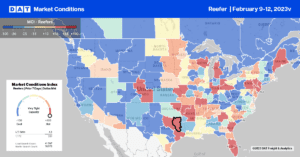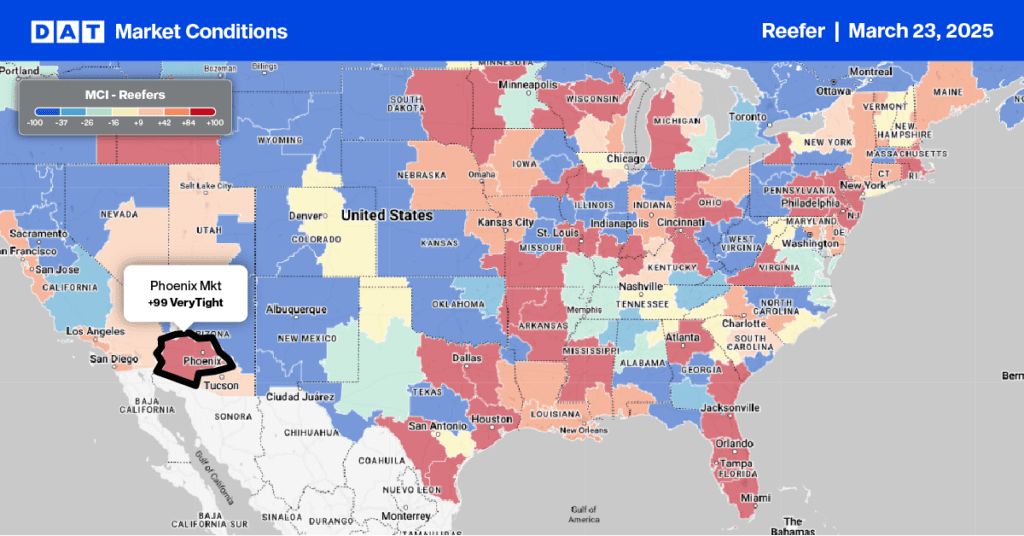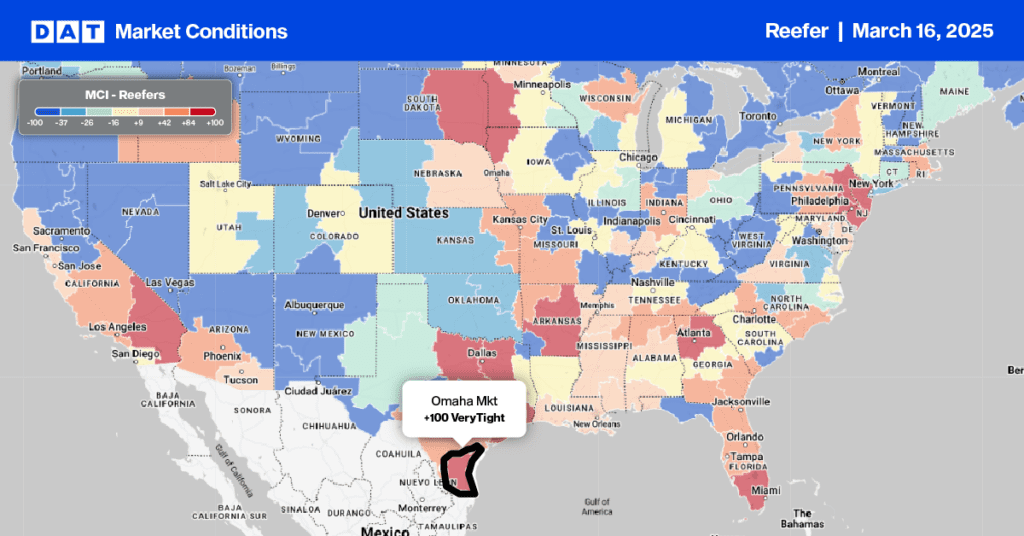Regarded as the fasted growing and largest refrigerated port in the U.S., the Port of Philadelphia (PhilaPort) is home to the Packer Marine Terminal, adjacent to the Interstate 95 and 76 freight corridors. Processing around 300 reefer trucks daily, PhilaPort is within a day’s drive by truck to a third of the U.S. population, making it an ideal location for time-sensitive refrigerated imports. According to January import data from IHS Markit, Philadelphia has moved to the number one spot for volume importing 13.9% of the total reefer TEUs (twenty-foot equivalent units). New York is a close second at 13%, while Wilmington is a distant third at 7.7% of total reefer import volume.
Even though national reefer import volumes are starting in 2023 at a similar pace as last year, the East Coast is beginning at its highest level in the past five years. Import TEU volumes are up 7.1% m/m and 1.3% y/y, while in Philadelphia, volumes are up 2.3% y/y and 22.2% m/m. New York and Wilmington are down by 10% and 17% y/y, respectively. The West Coast has had its slowest start to the year in the past five years – volumes are down 3.7% y/y and almost flat sequentially. Port Hueneme (near Santa Barbara) is a high-productivity, low-congestion port and is ranked first for the West Coast reefer imports, with imports up 21.2% y/y and 10.6% m/m. Los Angeles is a close second, where import reefer volumes were up 3% y/y but down 6.6% m/m in January.
Market Watch
All rates cited below exclude fuel surcharges unless otherwise noted.
Surging volumes of flowers ahead of Valentine’s Day in Miami helped push state-level rates in Florida up by $0.26/mile to $1.66/mile last week. In Miami, the number one reefer market last week and ground zero for floral imports from South America, spot rates spiked, increasing by $0.29/mile to $1.65/mile, while long-haul loads to Brooklyn, NY, averaged $1.91/mile, the highest they had been since June last year. On the regional lane 670 miles north to Atlanta, spot rates at $1.89/mile were almost $0.70/mile higher than the January average.
In Savannah, reefer capacity tightened last week, with spot rates jumping by $0.62/mile to an average of $2.64/mile. Solid gains were reported on the 720-mile haul to Philadephia, where spot rates at $2.09/mile were $0.31/mile higher than in January. In Michigan last week, spot rates increased by $0.08/mile to $2.75/mile for outbound loads, which is right around 2018 and 2021 levels. Most of the gains came from Detroit, where rates increased by $0.20/mile to $2.16/mile, while in nearby Grand Rapids, spot rates were up $0.06/mile to $2.66/mile.

Load to Truck Ratio (LTR)
After a slow start following Hurricane Ian late last year, the Florida produce season is back on track, with weekly truckload shipping volumes within 2% of the previous year. National volumes are 12% lower compared to last year, contributing to fewer load posts in the reefer market, which were down 15% last week. Reefer spot capacity loosened with 11% more equipment posts last week and is still at the highest level in seven years, resulting in the reefer load-to-truck (LTR) decreasing from 4.88 to 3.73.
Spot Rates
National average reefer linehaul rates are following a typical cooling trend in the lead-up to Spring and increasing produce volumes following last week’s $0.03/mile decrease. At $2.06/mile, reefer spot rates are $1.04/mile lower than the previous year, $0.09/mile lower than in 2018, and $0.11/mile higher than in 2019.


